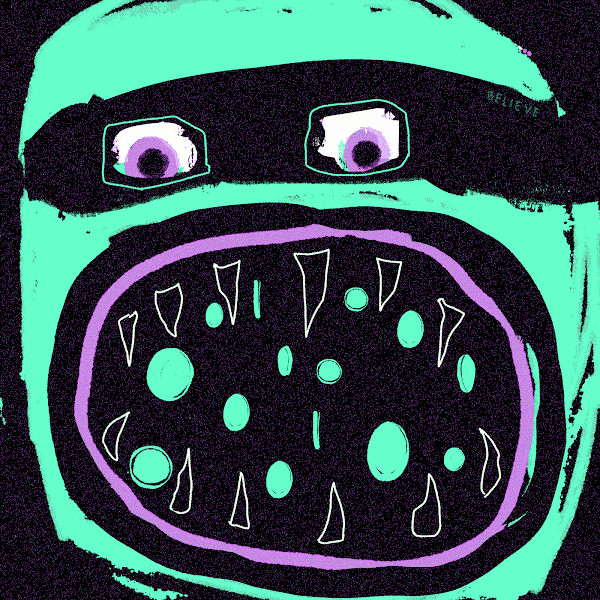Definition: Punk is about liking what you like, being yourself,
saying what you think and FUCK ALL THE REST.
You don’t need anything to be punk except for awareness,
self respect, respect for others and an open mind.i
 The big news this past week was that Nicky Tomato and his investment firm/fund 1conf bought legendary Cryptopunk 4156 for an Ape Punk record 2`691 ETH.
The big news this past week was that Nicky Tomato and his investment firm/fund 1conf bought legendary Cryptopunk 4156 for an Ape Punk record 2`691 ETH.
While at the time of the transaction ETH was closer to $1k than its $4.8k peak in late 2021, and the dollar amount of the sale therefore wasn’t a record, it was still broadly applauded as a “big deal”; one worth celebrating not least of all for the fact that the NFT space’s beloved “exit liquidity”ii was back in action, and that the early bull run of “blue chip” NFTs was now well underway, possibly signalling that deals were now too tempting to ignore and the market bottom might already be behind us.
But is the story really so rosy? Let’s look at some pros and cons of Funds/Firms/DAOsiii (FFDs) slurping up our jpegs.
Pros:
- Validation: Similar to sales at Sotheby’s or Christie’s, being worthy of sale or investment by the fiat world’s power players is still a blessing that holds considerable water to most people’s eyes. Since we all spend at least some of our time in meatspace, no matter how much we might see ourselves as “digitally-native,” it’s still socially validating to see our favourite projects in lights.
- Numba go up: If the FFDs are responsibly managed and have long lock-up periods, liquidity will be reduced which tends to make numba go up for other holders, which only further raises the profile of the newly acquired collections to the politically- and socially-well-connected FFDs, increasing the strength of the network signal of the collection while reducing available supply.
- We’re pushed to keep creating: We’ve discussed previously on these pages that all sub-cultures eventually get co-opted but that this is nothing to mourn so long as we keep exploring and pushing the boundaries of the possible. So as our former “grails” get increasingly locked up by slicked-back FFDs, it pushes us to keep creating! For this is we can carve out our creative niches at the edges of the spectrum.
Cons:
- FFDs aren’t people: As much as FFDs are composed of people and like to pretend that they are (legal) people, when the best people from their ranks (esp. visionary founders) eventually move onto greener pastures, the brand stays behind to extract as much value from the exhaust as possible. Indeed, the quality of an art project’s holders matter just as much as the quality of the art itself, so having the right people supporting the project is essential, and no matter how hard FFDs try, they’ll never be people.
- Collateral damage risk: Believe it or not, some JPEG buyers actually think they’re smart enough to trade one of the most volatile asset classes ever conceived on leverage. Not necessarily with their JPEGs as collateral, mind you, but the JPEG portfolio can still become collateral damage when shit hits the fan elsewhere in the portfolio and assets suddenly need to find a new home to give back shareholders even a few pennies on the dollar (see: Starry Night Capital (3AC) escapade).
- It’s just an investment: Supporting artists and even social signalling take a back seat to spreadsheets, which twists incentives in exactly the direction you’d expect, which is towards financialisation and the preeminence of commercial value above all else.
So does that leave us with a glass half-full, half-empty, or just a glass with water in it?
I’ll leave it to you to decide. Do you…?

___ ___ ___
- Of course the slightly less convenient dictionary.com definition reveals rather more derogatory, submissive, and homosexual connotations, but it’s probably best that we just skim over that urbanised context, y’know?↩
- It’s been said before but it bears repeating: if you’re talking about “exit liquidity” then you haven’t made it yet!
Ask Jerry Seinfeld, who considered selling his Porsche 917 for who knows how many tens of millions only to realise that the whole point of money was to own grails. Like, what else are you gonna buy that fill the void left by a race-winning 917? Similarly, what are you gonna buy if you sell your last Punk, much less your last Punk Ape? ↩
- On the subject of DAOs, from the chat:
Pete: I’d consider myself a fan [of FlamingoDAO], at least based on the various podcast conversations with Kevin Rose I’ve picked up. Their collection is nothing to sneeze at either. Even if i’m generally skeptical of the whole “DAO” thing.
Mister Todd: Well, Tribute is probably as squared away legally as can be I think. Their DAOs are corps, file taxes, members are shareholders — limited to 99 and must be accredited. DAO executes all engagements. DAO is really just a crypto term layered over a legally compliant investment fund. Members vote with the “shares” which are tokenized. You could remove word DAO and the tokens (say use phys shares as proxy ) and there you go.
Pete: Would be much more intellectually honest to do so. But hey, jazz sells! Still LCIF < DAO for cool points.
So “DAO” it shall be for this cycle, lack of autonomousness and decentralisation apparently notwithstanding.↩
